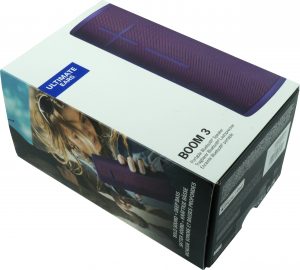 Few people know that Logitech is actually behind the Ultimate Ears label. Whether one now feels this as an advantage or a burden is up to everyone. The whole Bluetooth products are now all somehow the same and you hardly see any really significant differences in the end. At least not at first sight, at the second. With an EIA of 150 euros, however, one is already moving in more sophisticated financial circles, where the Boom 3 definitely does not belong. Since you get the good piece meanwhile for well under 100 euros (some colors even from approx. 80 Euro), the whole thing was worth a test.
Few people know that Logitech is actually behind the Ultimate Ears label. Whether one now feels this as an advantage or a burden is up to everyone. The whole Bluetooth products are now all somehow the same and you hardly see any really significant differences in the end. At least not at first sight, at the second. With an EIA of 150 euros, however, one is already moving in more sophisticated financial circles, where the Boom 3 definitely does not belong. Since you get the good piece meanwhile for well under 100 euros (some colors even from approx. 80 Euro), the whole thing was worth a test.
Because in the end the reader should also have his benefit from such a test, because at the price the friendship ends. For a UHU, i.e. an underdog, Boom 3 is not even bad if one does not demand from such silicone tubes rape of physics. That's why I backed up my hearing impression once again by measuring the frequency range and using the decay curves. Because the fact that acoustically has to be reached very deep into the trick box, is due to the small size and the actual inner volume.
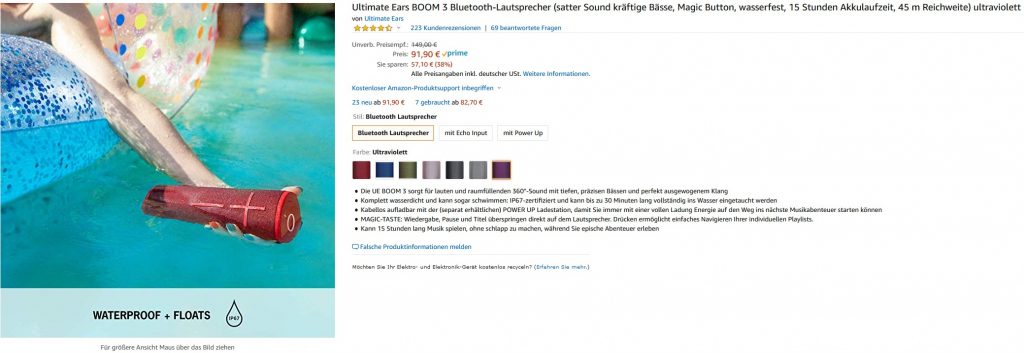
Scope of delivery and software
But always nice in turn! First of all, I always look into the box and the accessories. Speakers, quick-start guide and charging cable are included, nothing more. Such a small 5V plug-in power supply for approx. 2 USD in purchasing is unfortunately missing, which is for profit maximization, but is very detrimental to the user-friendliness. Especially for the road you would have liked such a power dispenser, so you have to buy it yourself. As I said, EUR 150 EIA set the bar a little higher.
Software sells hardware, that's a bitter truth in the end, which has already killed the Windows phone. Logitech, pardon Ultimate Ears, therefore also has an app at the start, which even serves with an equalizer for sound improvement, the party mode for pairing several of these sound dispensers and also for integrating playlists of various music providers like Spotify. This works stable and intuitive, especially since you can also get firmware updates for the Boom 3, which I was able to test in practice. But it works without complaint. Unfortunately, there is no dark, energy-saving and eye-saving design.
Optics, haptics and functionality
Well, we don't look into the tube now, but at it. Silicone full body condom meets textile fabric as a casual pelle for top. Looks like a Bluetooth speaker and is also one. The part is advertised with IP67, so you can also take it to the bathtub or the dredging lake. At least in the tub, the 30 minutes are completely sufficient, because in the self-test the water was already quite cold after 20 minutes. Enough, then. Shower, rain or frantically splashed coffee should not be able to destroy anything.
The operation is intuitive, because the general concept is repeated again and again, because Bluetooth only has a certain range of functions. The following diagram shows both the controls and the most important dimensions. With a height of 18.4 cm and a diameter of 7.3 cm, the Boom 3 is somewhere in the midfield. Not too big, but not too small either. The 608 grams are accounted for by the battery and the four chassis, two round 2" drivers actively providing sound pressure and two passive 2 x 4 inch passive membranes for the bottom. This is the usual assembly and does not contain any acoustic distortions of the swirled kind. You can live with that.
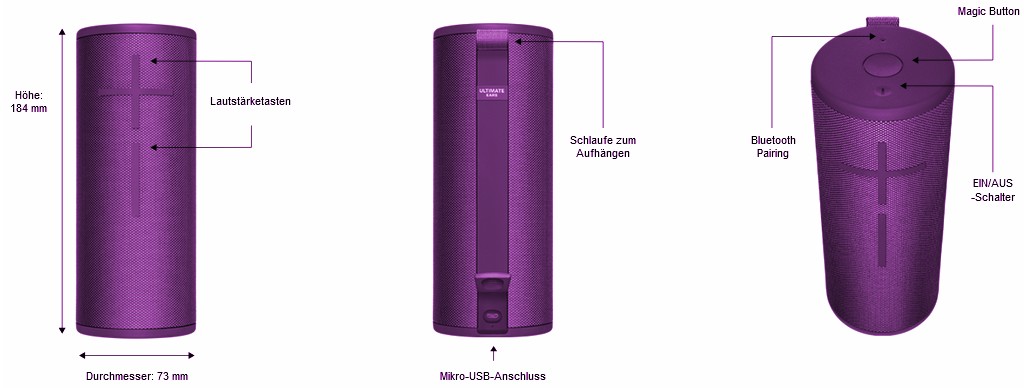
The strap is practical, but you would almost have wanted a simple carabiner hook in the accessory. The operation via the two volume controls at the front, the pairing, the on-off and the so-called Magic button is standard in class. The latter can jump forward and also work on your own playlists, thanks to the app. Pairing is quite safe, but the specified range of 45 meters is more of a paper value, at least when pairing. As long as you stay in normal call range, you can also connect later, provided a suitable source. But then no tree may stand in between. A2DP is standard and on board, but not much more.
The part is charged via micro-USB and the charging process itself can take a long time depending on the power source. Therefore, the insertion with the missing plug-in power supply is also at the beginning. The supplied cable has a built-in status LED in the plug, after all. The battery is plentiful, even if I couldn't reach the 15 hours. Around the 4-5 hours maximum pullwere were certainly in it, at room volume sometimes up to 10 hours. Rich loose.
Sound measurement and sound impression
Well, it is and remains a small Bluetooth speaker, trapped in its own body. In fairness, this must never be lost sight of, and then the measured and heard can also be objectively classified. That's why I dragged the good piece into the audio chamber. And what came out of it? If we look at the curve, we also see that the two passive membranes have been tuned to the upper bass (100 to 150 Hz), which also makes sense.
Deeper bass could only be obtained from such a winnance with the help of more output power, in which the manufacturer, however, is very silent. Comparative measurements with similar loudspeakers, whose output power is known, lead me to an estimate of real 3 watts per channel, nothing more. But that may be enough and is quite noisy. The real highlight is the midtone range, while the tweeter weakens slightly in the sum, but has partially unpleasant peaks that are not visible in the smoothed curve. But for that I have the decay curves. However, it has to be noted here that the radiation is very angle-dependent and I measured in the open field. But the result is still passable, although no hi-fi.
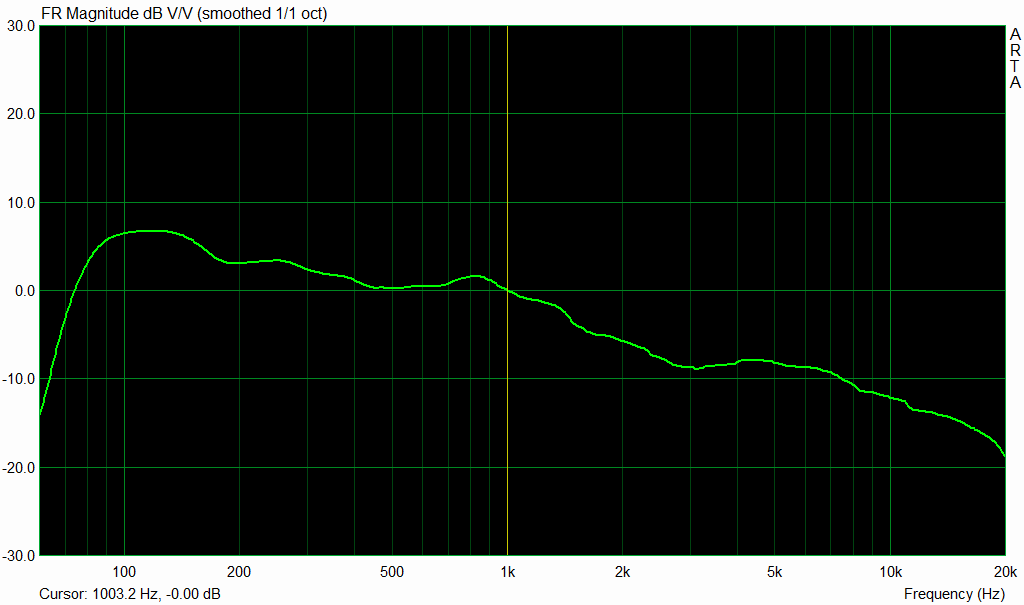
If you look at the decay diagrams and put everything into the right relation to the time, you can see by the "response" and "re-swinging" in the cumulative STF spectrum that the area is actually mapped well up to the upper middle, but after a dent certain resonances occur, which I would charge the very long swinging and sluggish passive membranes. By the way, you can't find a real bass, but it's already quite neat. To come under 100 Hz with such a small tube for this price also audible and lossless, that would be very sporty.
The tweet is characterized by two rather unpleasant peaks, which are characterized by approx. 6 KHz and at approx. 8 KHz. If you play good material, then Sibilants, blow-out sounds and drums can be annoying. Here you hear more than you might like. But it's mainstream compatible and stands for the much-loved bathtub sound.
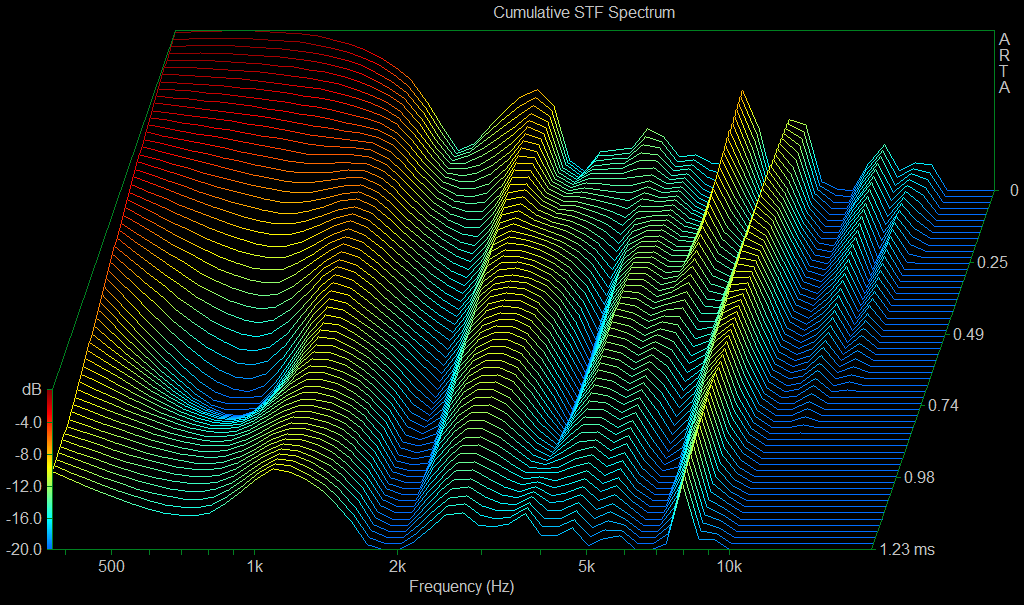
The CSD diagram is ruthless. It shows the different times of response and "standing" of a frequency range. Especially in the area from the upper middles and the high tone, the almost crystalline-looking curves show the acoustic mislighting of the active chassis. While the middles wobble almost forever, it is downright chaotic in the upper area. It sounds rather unclean and frayed to the human ear. You buy the volume levels in the lower range through long-lasting and certainly also intentional resonances, which suggests a superficial abundance, but actually puts a blow into the stomach pit of any more delicate music. Capital Bra goes quite well, but Mozart is stoned and a Bach trumpet with composers and winds is almost dematerialized with the 50-ton press.
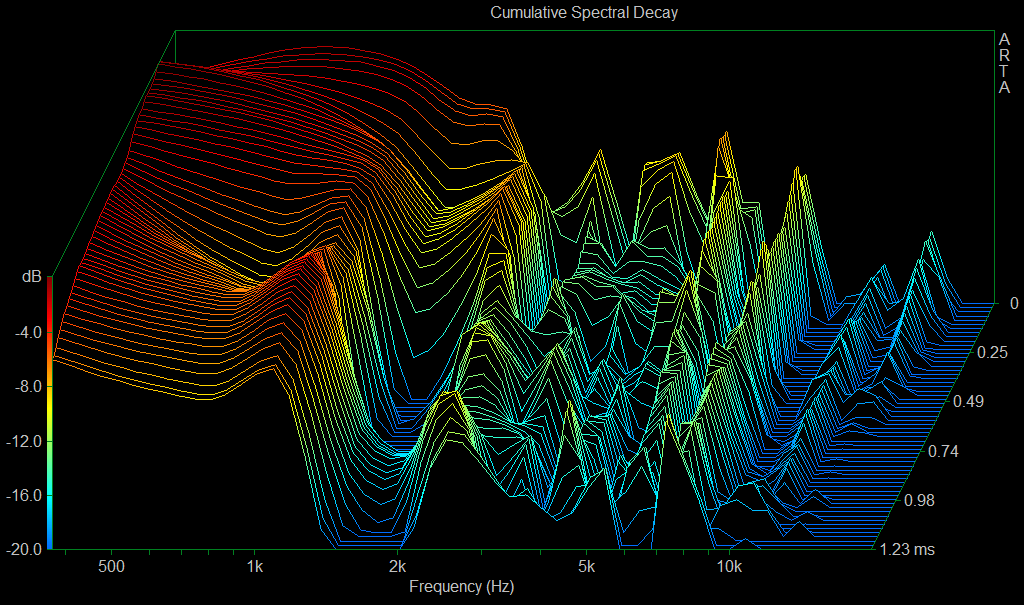
Summary and conclusion
You end up with the Boom 3 unintentionally, but inevitably in the category "Can you buy, but you don't have to". So, of course, this test is not a rip-off, on the contrary. I have already had much worse truffles for the same or more money in my fingers, that has to be said. But also better ones. By the way, the software pulls it out in the end, even if it can only scratch the tonal deficit superficially. But it relieves the greatest pain. It is an analgesic for the senses, but unfortunately also not a total operation.
Runtime, loading time and handling are good to very good, the Boom 3 is also dense. The loop solves some problems and with carabiner hooks it is then really helpful outdoors and on the go. But you have to buy the, as well as a suitable plug-in power supply, then yourself. Because you don't always have the PC with you. All my mobile phones now use USB-C, so that not a single charger fits here. And otherwise? Sounds neat, is reasonably noisy and looks quite fancy. You can't write more about it and certainly shouldn't.













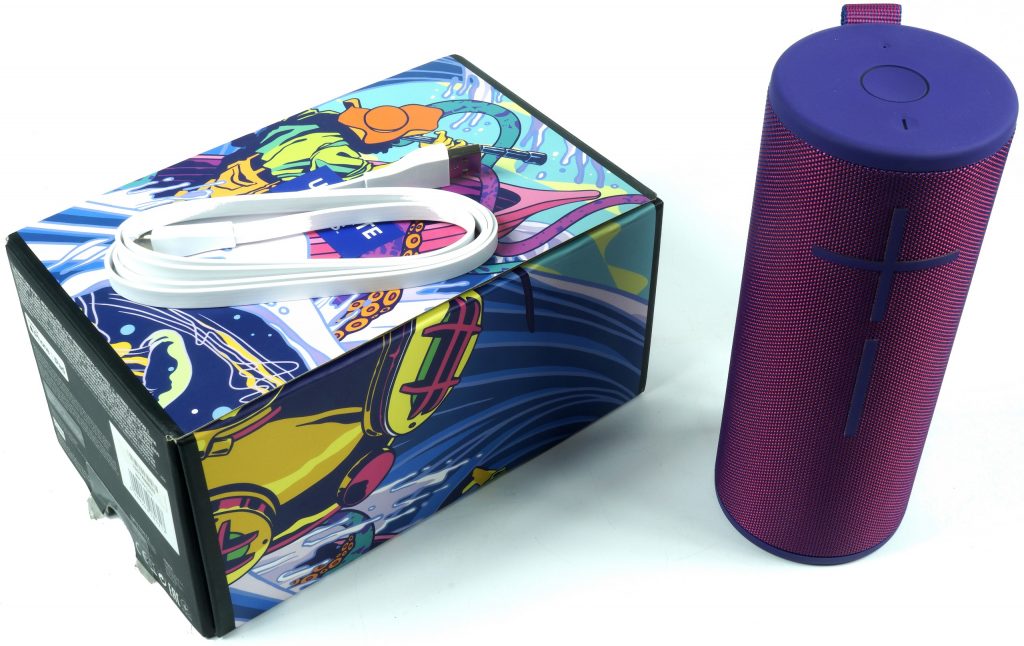
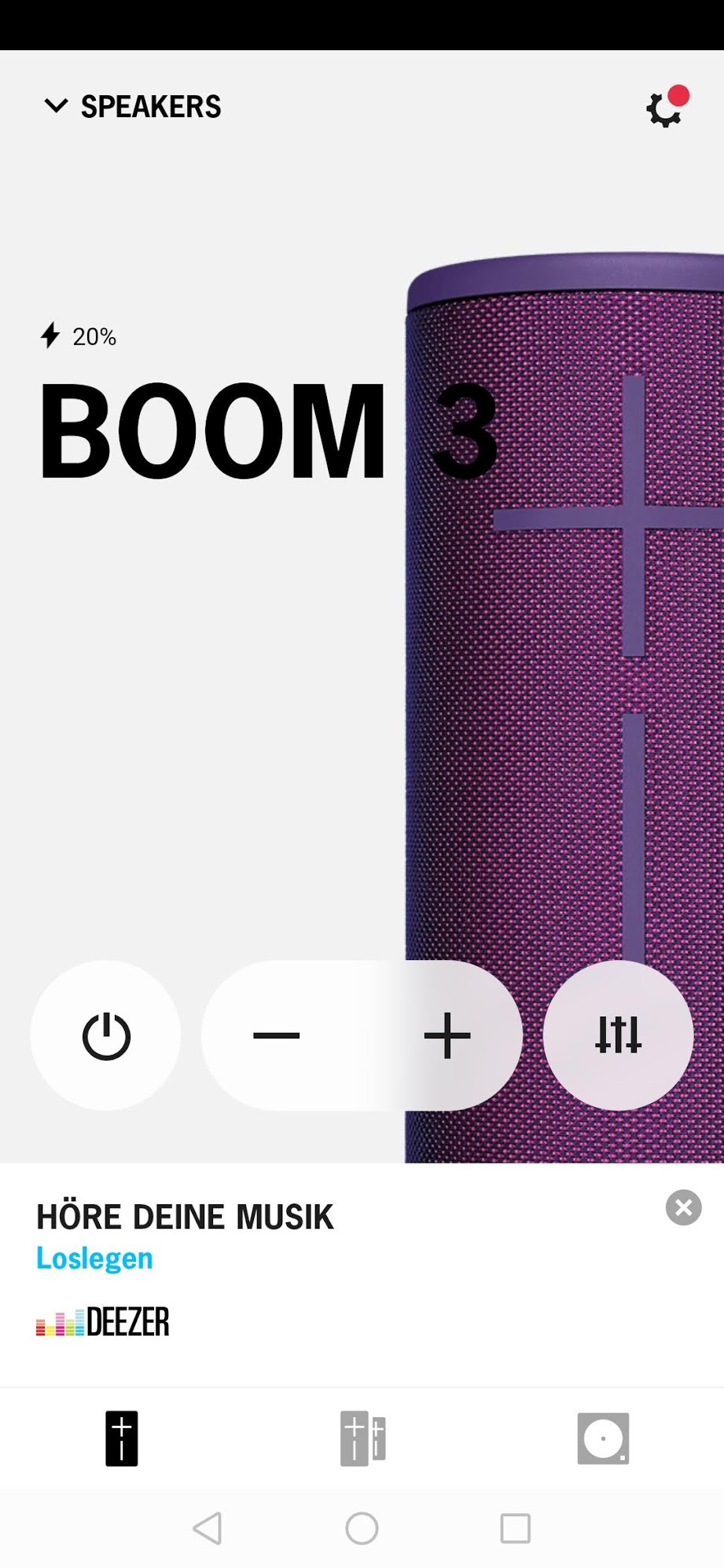

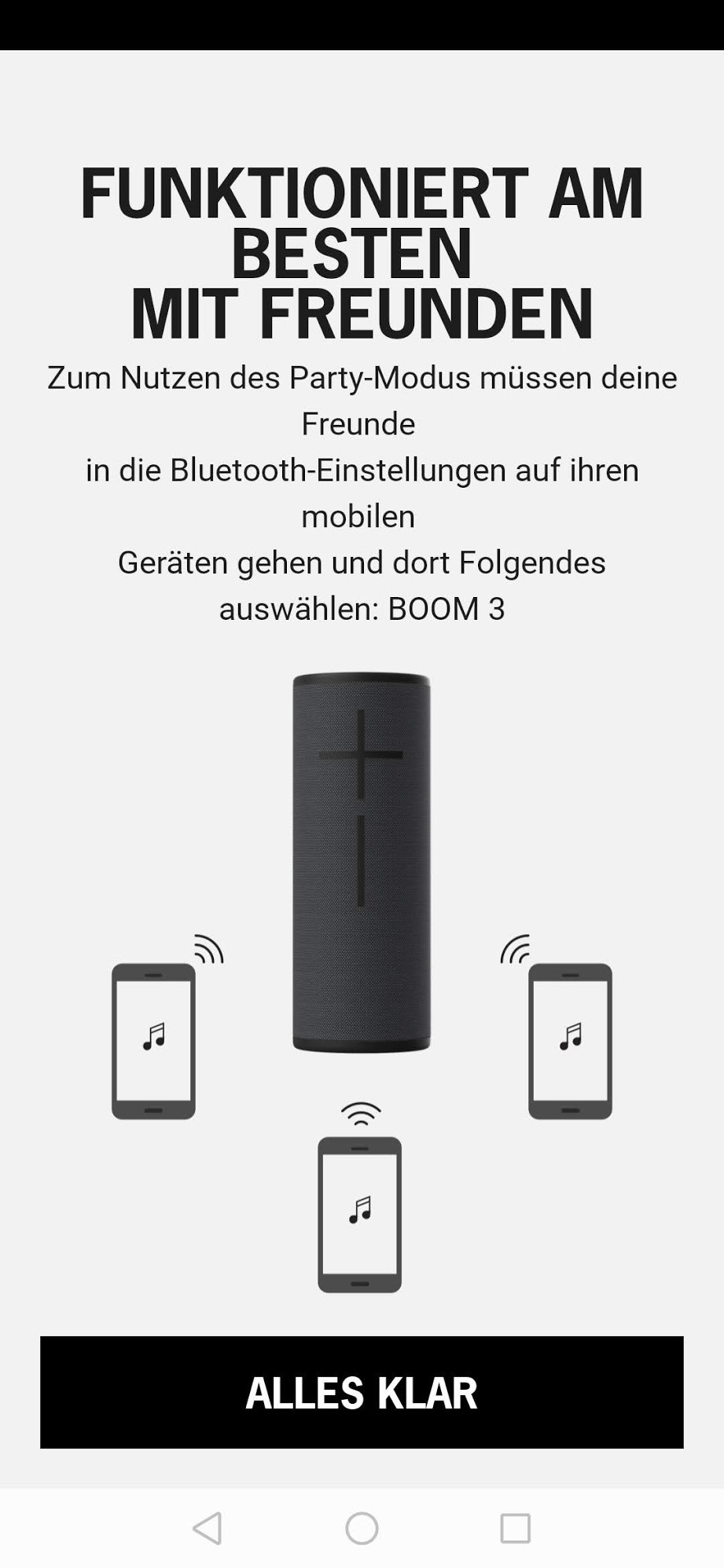


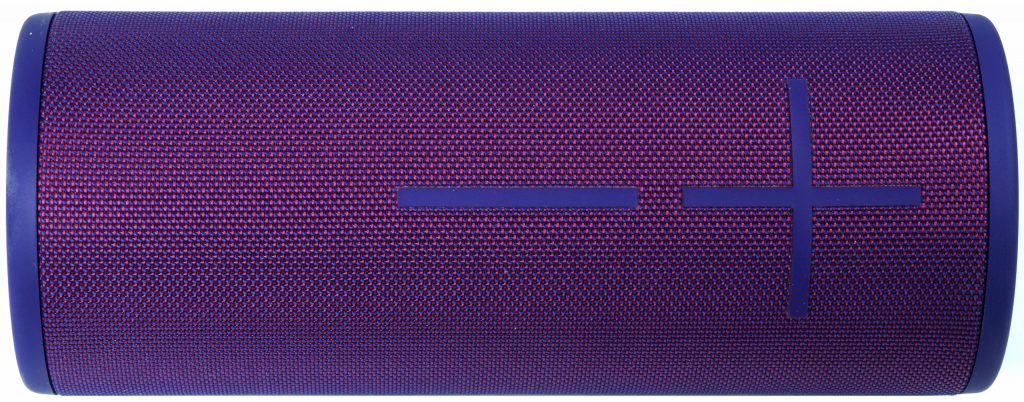

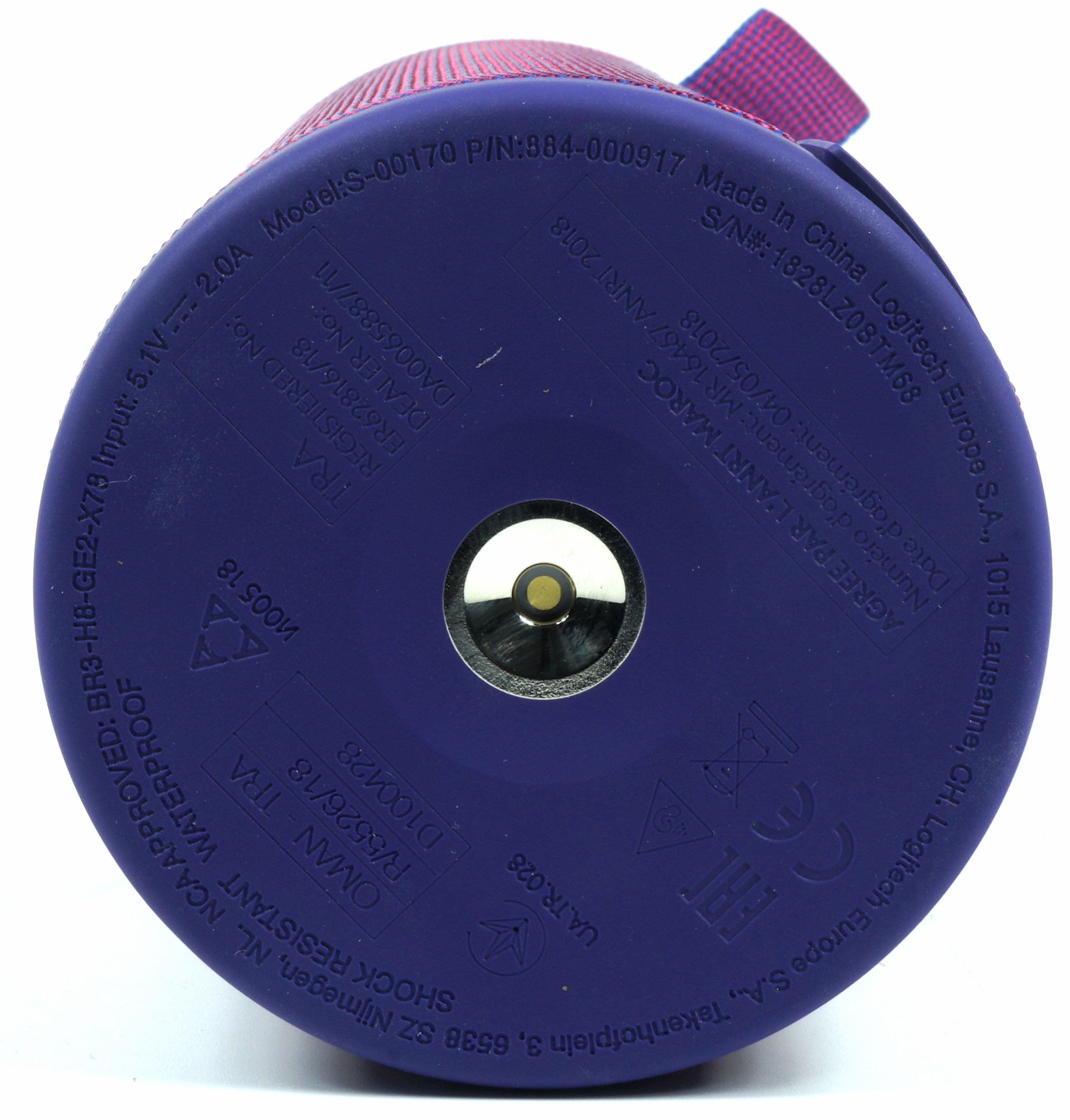
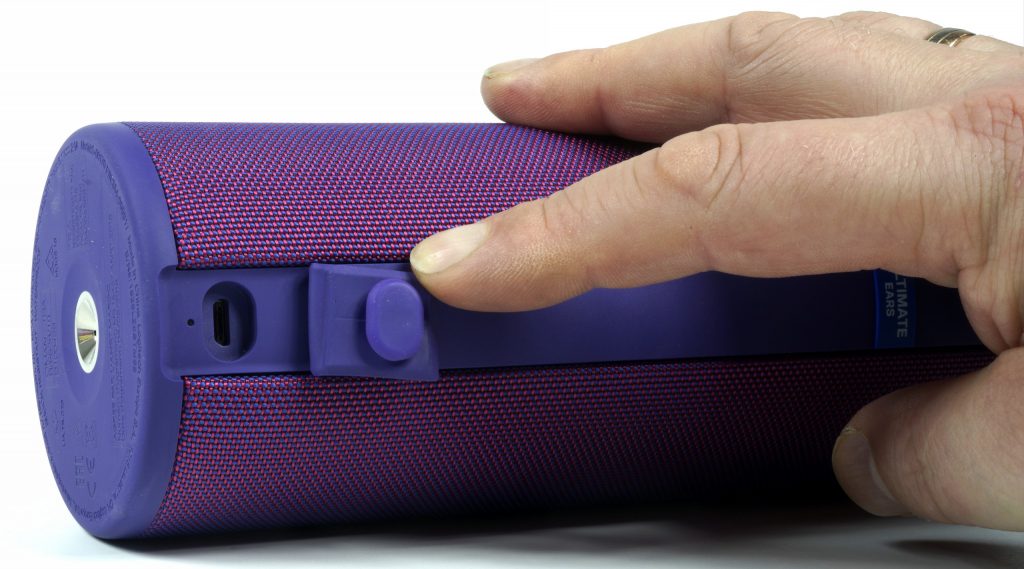


















Kommentieren